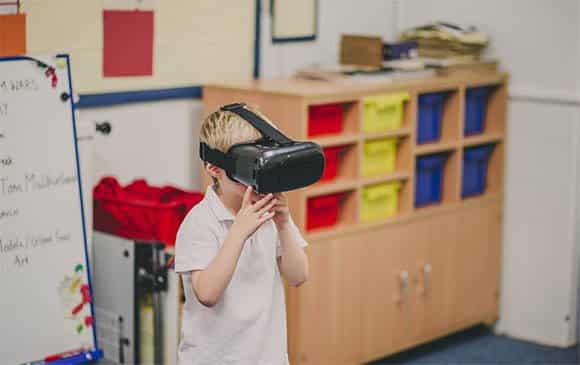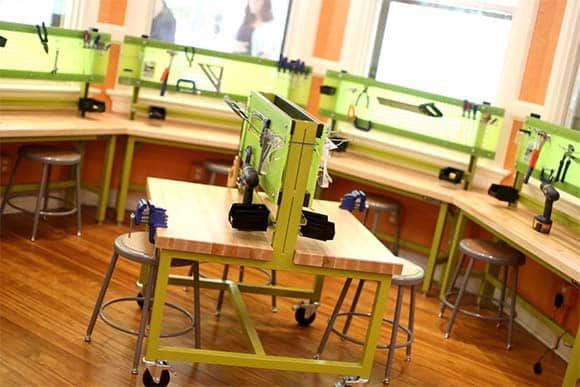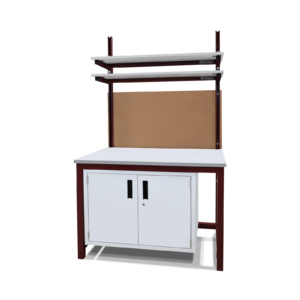If you are a parent or teacher, no doubt you’ve become overwhelmed at times by the increasing number of entertainment choices that claim to deliver bone fide educational benefits — ranging from character-based television series to YouTube how-to videos, to interactive video learning games. No wonder: sales in the “game-based learning products” slice of the entertainment-education market is simply exploding right now. One industry analyst, Ambient Insight, estimates sales will jump from $2.6 billion in 2016 to $7.3 billion by 2021. Join us as we take a look at the world of “edutainment” and the effect it’s having on our traditional education curriculum.
Today’s Revolution in Edutainment Changes Everything, Or Does it?
With the advent of high-quality educational games for the iPad (thank you Sesame Street, Disney, and Scholastic) immersive VR gaming helmets (thank you Oculus Rift), and video tutorials on practically any subject (thank you YouTube, Khan Academy, and Microsoft’s Lynda.com), you might think we’ve been thrust into a brave new world of entertainment-education that’s unlike anything the world’s seen before.
Well maybe not.
Before today’s online games, we had educational television and radio programs. (The youngest Baby Boomers will remember TV programs, like Mr. Roger’s Neighborhood and School House Rock, while members of the earlier Silent Generation will remember story time radio broadcasts.) Nor is location-based entertainment a new concept: The Children’s Museum of Boston opened its doors in 1913, almost 70 years before Disney’s Epcot theme park opened in Florida.
In 1964, under the leadership of Michael Spock (son of best-selling baby book author Dr. Benjamin Spock), the Boston Children’s Museum debuted its first interactive museum display, called “What’s Inside.” This pioneering interactive exhibit has become the model for museums around the country, including; the Children’s Museum of Houston; the Children’s Museum of Indianapolis; COSI (Center of Science and Industry) in Columbus, Ohio; Peoria PlayHouse Children’s Museum in Illinois; and San Francisco’s Exploratorium.
As one of the country’s oldest museums dedicated to children (second only the Brooklyn Children’s Museum, founded in 1899), the Children’s Museum of Boston pioneered the development of fully interactive learning experiences for kids in a museum setting.
Choosing Hands-on-Learning Opportunities: From Montessori to Makerspaces
Students of educational learning theory (e.g. pedagogy) should be waving their hands right about now to remind everyone that Dr. Maria Montessori was one the original pioneers of interactive, hands-on learning methods. Montessori developed a constructivist theory in which students learn more effectively through “discovery,” e.g. by working and experimenting with materials directly (rather than retaining information from rote instruction drills). Interestingly, her theories first flourished in the US during the time that the Boston Children’s Museum was founded in 1913, and once again in the 1960s, when Montessori’s Method of education first gained a major foothold in the American pre-school and kindergarten education system.
Hands-on learning-by-doing is one of the hottest segments of the Edutainment marketplace right now. Take a look at this clip of middle schoolers taking part in a program at the makerspace within the Arizona Science Center in Phoenix.
Middle-school students learn how to create things using shop tools, 3D printers, and more at the “Create University” event sponsored by TechForce held at the Arizona Science Center in Phoenix. (Check out the heavy-duty wood topped Formaspace tables at 1:00 minute in.)
The Right Edutainment Projects Can Help Develop Key Career Skills
Parents and teachers take note! As the Arizona Science Center video points out, this kind of hands-on learning in a makerspace reinforces what students are supposed to be learning in their STEM (science, technology, engineering, mathematics) curriculum at school.
It’s important to make judicious choices when investing your time and money in edutainment offerings as they can make a significant difference.
Interest levels are high when kids have an opportunity to apply their newly acquired knowledge in a playful, experimental environment, e.g. one where they can make their own fun — their own toys if you will. In other words, in order to help young people become better learners, it’s important to give them unstructured opportunities to apply the skills they have learned in school — by offering projects that interest them.
Experimentation and play can also help students discover and develop important job skills. Experience gained by taking part in summer “coding camps,” building interactive robot devices, or learning how to make videos and 3D animations, can help young minds discover a lifelong passion for software development, mechanical engineering, game development, and communication.
One of the standout role-models for young minds interested in bringing their own creative inventions to life is Limor Fried, a.k.a. Lady Ada. She’s the founder of Adafruit Industries, a New York City-based open source hardware business that’s at the heart of the maker movement.
https://www.youtube.com/watch?v=lHC10q_a7Nc
Don’t let Limor Fried’s colorful hair and playful product names fool you, she is a serious, savvy businesswoman who has created a worldwide legion of young fans (especially young girls) who aspire to make things.
What does Edutainment success look like?
In our view, edutainment success means being inspired to learn and create something new.
Here is a fantastic example: YouTuber Ev3Dude had the idea to create an automated machine that folds t-shirts, using the Lego Mindstorms line of programmable logic motors and sensors:

Bravo!
Types of Edutainment Products and Services on the Market
- Video Instruction Tutorials
- Interactive Educational Games
- Role Playing Games
- VR (Virtual Reality) Simulations
- Online Classes, including MOOC (Massive Open Online Courses)
- Makerspaces
- Location-based Entertainment, such as Children’s Museums
- Summer Camps, such as Coding Camps
- AI (Artificial Intelligence)-based Teaching Tools, incl. Virtual Tutors
- IoT (Internet of Things) Kits, incl. Robots, RC vehicles, Wearable Tech
- Interactive Programming Languages
- Construction Kits
- Studios, including Art and Music
Educators are Using Edutainment Products to Assess Student Learning
The widespread availability of online information is posing new challenges for teachers: with the Internet, the unscrupulous can simply cut and paste the necessary information into term papers and tests without really understanding the underlying principles.
How can you grade students accurately if you can’t be certain they’ve actually learned the material?
The solution? Some progressive school systems are experimenting with creative software programs that allow students to create their own edutainment presentations.
This turns the tables around completely. Rather than being passive consumers of edutainment software, students are now challenged to be the creators of original edutainment content.
Instructors at the Douglas County School District around Denver challenge young students to create animated, interactive presentations that illustrate a concept learned in class.
The results are encouraging. The process of creating storyboards and interactive content helps provide teachers a way to assess whether students truly understand the material or not, and students learn additional communication and computer skills to boot!
We Can Learn Difficult Information More Easily When We are Interested and Motivated
Given the plethora of edutainment products on the market, which ones should you choose?
You can safely mark off those products that don’t offer much educational value.
But what about the rest of them? What are the keys to successful learning when choosing edutainment products?
Researchers investigating the value of edutainment products are finding that common sense prevails. If the subject matter is interesting to us, we’ll learn more — even if the subject material is difficult.
The bottom line? Let kids choose what interests them, and the learning will follow.
Our Edutainment Predictions for the Future
“It’s tough to make predictions, especially about the future.”
― Yogi Berra
As we look ahead to the future, it seems like a given that advances in visual reality simulations will make edutainment products even more realistic, immersive, and interactive than they are today. As game developers adapt research from neural networks and artificial intelligence, it will become more commonplace to interact with artificial characters in a natural, realistic manner, using spoken language. Characters will begin to learn about us and respond accordingly, just as we do with them.
Another trend we expect to see is a growing, widening backlash against raising “overscheduled” kids, who are chauffeured back and forth from one planned activity to the next — from soccer practice and school plays to music lessons. As parents resolve to make room for more freeform time for their kids to learn and play, high-quality, well-designed edutainment products can fill the gap by providing a more valuable, unstructured educational play experience that’s less tightly managed.
Edutainment products will also continue to evolve to provide more satisfying experiences for adults, not just kids. They will continue to support the emerging trend of seeking memories and “experiences” (viz “bucket lists”) over acquiring material possessions, as well as supporting the emerging trend toward life-long learning.
Are You Considering Creating Your Own Edutainment Facility?
If you have plans to build or expand an edutainment facility, we want you to know that Formaspace can help.
Whether you are building a location-based entertainment facility, museum, or makerspace, you need to speak with a Formaspace Design Consultant.
We have the expertise you need to help plan and specify the right types of furniture, storage, and workspaces you’ll need to make your project a success. And when you’re ready, we’ll custom manufacture everything — just for you — at our factory headquarters here in Austin, Texas.
American-made with a 12-year guarantee: just one of the reasons museums, educational institutions, and government agencies choose Formaspace.
Just fill out the quick contact form below, and we’ll get the conversation started today.











